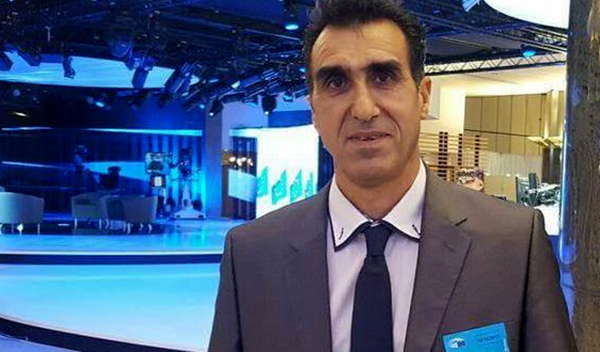Mohammad Ashayer and Aziz Asadi were disappeared after they criticized the MEK leaders.
Ghafoor Fattahian, a former member of the Mujahedin-e Khalq (MEK, PMOI) testifies about the fate of two of his comrades. He witnessed suppression, torture and disappearance of Mohammad Ashayer and Aziz Asadi in the Cult of Rajavi. The group commanders then exploited the photos of their both victims as victims of the Islamic Republic!
Fattahian left the MEK in 2011 after 19 years of membership. He lives in France now. Comparing Maryam Rajavi’s so-called “Ten Point Plan” for “Free Iran” with the reality inside the MEK, Fattahian proves that the group is undemocratic and hypocrite.

Ghafoor Fattahian, a former member of the Mujahedin-e Khalq, living in france
He writes, “In the notorious Camp Ashraf, a lot of members would react Maryam Rajavi’s speeches about free Iran in her propaganda shows because they could see contradictions between what Rajavi said and what was going on inside her camps.”
He even recalls Massoud Rajavi’s reply to members who criticized Maryam: “Maryam and I have to say these words in order to shut the mouths of western politicians”.
Two of MEK members who began dissent at Camp Ashraf were Mohammad Ashayer and Aziz Asadi. Fattahian confirms that they were killed by the group leaders after they criticized them for the conflicts between their words and acts.
Actually, actions carry the stronger message. Fattahian recounts:
“These two people were in my unit. Mohammad Ashayer criticized Maryam’s words about free future Iran saying that the MEK itself was not engaged in democracy and freedom for its own members and acted undemocratically inside its base. He would ask how Maryam Rajavi could guarantee freedom of Iranians after the overthrow of the Islamic Republic.”
According to Fattahian, “Aziz Asadi criticized the MEK for lack of freedom of speech and expression”. He would also question the function of the MEK’s so-called National Liberation Army.
Both men were tried in a court under the command of two female commanders, Maryam Akbari and another woman who Fattahian does not remember her name. “The trial lasted for several hours,” Fattahian writes. “The two men were insulted, humiliated and accused of being the agents of the Iranian intelligence ministry during the trial.”
However, Ashayer and Asadi did not shrink from their opinion. Thus, Assadollah Mosana, the MEK’s notorious torturer entered the scene. Fattahian was an eyewitness of the scene:
“Assadollah Mosana along with some of other prison guards and torturers suddenly attacked them. They beat them to death and then they took them out of the hall, and we never saw them again.”
Fattahian tried to find a track of his disappeared comrades, but he could not find anything until two years later. “Kamran Fallahi and I were patrolling around Camp Ashraf,” he says. “We went to the camp’s cemetery and ran into a group of journalists. A large number of photos of casualties of the MEK’s terrorist operators and executed members of the group were hanging everywhere. Kamran and I were shocked to see the photos of Mohammad Ashayer and Aziz Asadi among them. Pari Bakhshai, the high commander of the camp was telling the journalists that they were victims of the Islamic Republic!”
Ghafoor Fattahian and Kamran Fallahi went to Pari Bakhshai and asked her, “When were they killed? They were in our unit” Bakhshai answered, “Good job to tell us about them. We will remove their pictures,” But, eventually Ghafoor and Kamran were kicked out of the cemetery.
This was not the end of the story. Ghafoor and Kamran were summoned immediately after they got back to their unit. “Never talk about what you saw today! It is a red line!” They were told.

